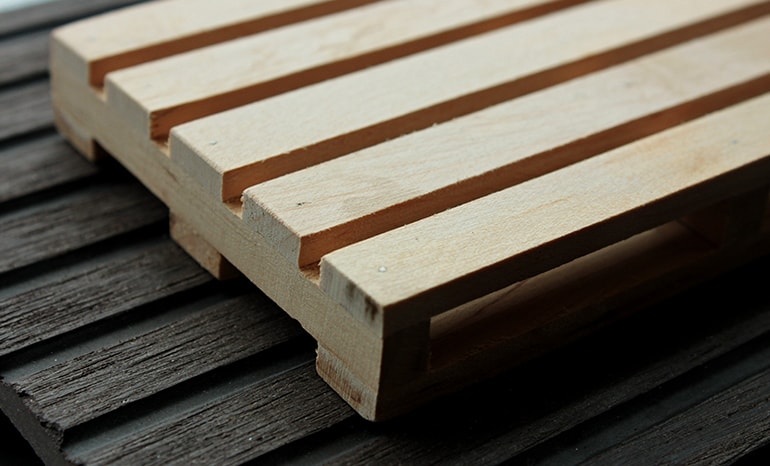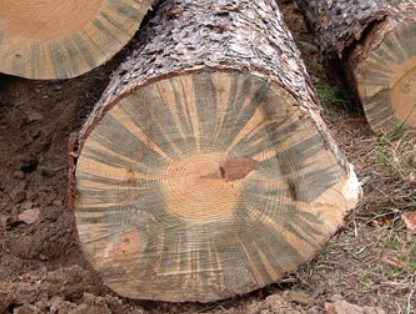Stumped About Wooden Pallet Stains and Discoloration?
Spring is a colorful season, but when it comes to your pallets, seeing any variation in color can be cause...
Spring is a colorful season, but when it comes to your pallets, seeing any variation in color can be cause...

Spring is a colorful season, but when it comes to your pallets, seeing any variation in color can be cause for alarm. Is it mold? Does this mean you have to replace your entire pallet supply? Don’t feel blue; instead, take a closer look at your pallets. Discoloration doesn’t necessarily mean a mold infestation. Rather, it could result from naturally occurring, non-biological defects that are harmless.
Black – When steel wires, staples, nails, saw blades, or other iron or steel comes in contact with wet wood, it can produce a dark stain on the wood. This is known as iron stain and it is the most common discoloration found on wood, including pallets. While unsightly, it is not dangerous to human health.
Brown – Kiln drying certain wood species—western hemlock in particular—can cause variations in surface color; affected areas turn dark brown.
Tan – You and I may look healthy with a tan, but when your wood pallets turn bronze, they are referred to as “weathered.” A chemical change occurs in wood tannins when exposed at length to sun exposure. You can help minimize this by storing pallets inside or, if they must be stored outside, keep them covered and well ventilated.
Blue – Rather than mold, this color could be a result of bluestain, a type of fungi found in wood products that does not cause decay. Unlike mold, it is not airborne and it does not digest the wood cell wall, which means it has minimal impact on structural integrity.
Gray – Hardwood species such as oak, beech, and maple can be affected by enzymatic discoloration (or a reaction of naturally occurring enzymes in living cells). The result of which is a grayish tone in sapwood.

Green/Purple – Lines or streaks of green or purple are naturally occurring mineral discolorations. This condition develops in wood sourced from trees rooted in mineral rich soil. Green is commonly seen in sugar maple wood species and purple may be noticed in yellow poplar.
If you need help identifying the source of discoloration on your wooden pallets, please give us a call. Knowing the difference between mold and naturally occurring color defects can help you save time, money, and unnecessary worry.
 Aug 30, 2017
Aug 30, 2017
Ever thought about the color or design of the box in which your favorite product or food is packaged? How...
continue reading double_arrow Sep 16, 2020
Sep 16, 2020
The crystal ball is a bit foggy these days. While it’s hard to know what the future holds, we can take a look at data and trends. What we’ve discovered is that now is a good time to buy pallets. Here’s why…
continue reading double_arrow






